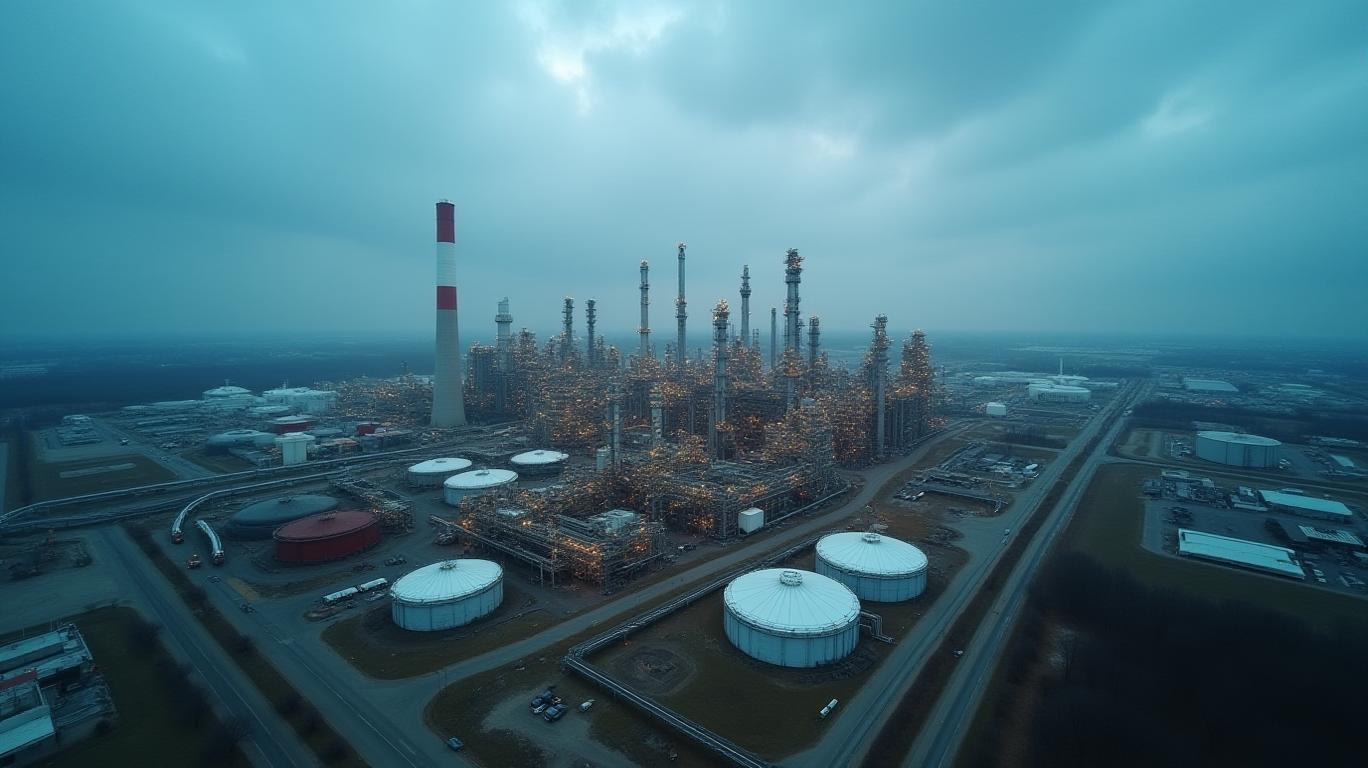Exxon's Joliet Refinery: Navigating Storms or Sinking in Compliance Waves?
The Joliet refinery, Exxon Mobil’s (XOM) crown jewel in Illinois, has become a microcosm of the broader energy industry’s struggle to balance operational resilience with escalating environmental mandates. After surviving a tornado in 2024, enduring equipment failures in 2025, and navigating regulatory scrutiny, the question remains: Can this 275,000-barrel-per-day giant maintain its role as a linchpin of U.S. fuel supply, or are its recurring disruptions a harbinger of systemic risk? Let’s dissect the data and decide if Joliet’s future is worth betting on.

Operational Challenges: Storms, Boilers, and Broken Chains
The Joliet refinery’s saga began in July 2024 when a tornado crippled its infrastructure, causing power, steam, and water outages. Despite the chaos, Exxon’s rapid restart—cutting recovery time by a third—saved its Q3 2024 earnings ($8.6 billion) and avoided a catastrophic regional fuel shortage. However, 2025 brought fresh trials: a May gas release from a faulty boiler forced units to operate at 50% capacity, and winter storms further disrupted output. These incidents highlight vulnerabilities in aging infrastructure, raising concerns about whether Exxon can sustainably manage its largest refinery amid climate-driven extremes.
Note: A visual here would show XOM’s stock price resilience despite refinery downtime, with utilization rates fluctuating but stabilizing post-2024.
Regulatory Compliance: Waivers, Warnings, and the Green Gauntlet
The EPA’s emergency fuel waiver in 2025 for Midwest states—issued to counter Joliet’s shutdown—underscores the refinery’s critical role in regional energy security. Yet, this lifeline also masks looming risks. Environmental mandates, such as methane emission caps and net-zero targets by 2050, will force Exxon to invest billions in green tech. While Joliet’s gas release in 2025 hasn’t yet triggered fines, future compliance failures could strain margins. The company’s $5 billion in cost cuts since 2019 may cushion some blows, but the refining sector’s thin margins (average 4-6% in 2025) leave little room for error.
Strategic Shifts: Consolidation as a Survival Play
Exxon’s decision to shrink its refinery portfolio from 22 to 15 facilities by 2025—including selling its smaller Montana refinery—suggests a ruthless focus on scale. Joliet, with its massive capacity (producing 11 million gallons of fuel daily), is likely a priority. By divesting weaker assets, Exxon can funnel capital into Joliet’s upgrades, such as advanced emission controls or weather-resilient infrastructure. This consolidation could position Joliet as a model for 21st-century refining: efficient, compliant, and disaster-ready.
Financial Resilience: Cash Flow as a Lifeline
Exxon’s financial fortress—$40 billion in free cash flow since 2020—gives it the luxury to weather disruptions. Even during 2025’s outages, the company maintained dividend payouts and share buybacks, signaling confidence in Joliet’s long-term value. Meanwhile, its Permian Basin and Beaumont expansion projects (which contributed to $5 billion in structural savings) provide a counterbalance to refining volatility. For investors, this cash machine offers a safety net against refinery-specific risks.
The Bottom Line: Bet on Resilience or Fade on Fragility?
The Joliet refinery is a paradox: a dinosaur of industrial might now walking the tightrope of modern energy demands. Its ability to rebound from the 2024 tornado and adapt to regulatory pressures suggests Exxon won’t let this asset falter. Yet, recurring outages and climate volatility create uncertainty. For income-focused investors, XOM’s 4% dividend yield and fortress balance sheet make it a compelling hedge against energy market swings. For those betting on a green transition, however, Joliet’s reliance on fossil fuels may be a liability.
Note: A visual here would show XOM’s dividend stability vs. peers, reinforcing its defensive appeal.
Final Call: Buy the Dip or Wait for the Storm?
The Joliet refinery’s operational hiccups are a blip on Exxon’s radar compared to its $500 billion market cap and global dominance. While environmental mandates and infrastructure risks are real, the company’s financial flexibility and strategic focus on core assets like Joliet make it a safer bet than smaller peers. For investors with a 5+ year horizon, now is the time to buy the dip—especially as XOM’s stock trades at a 20% discount to its 5-year average P/E. The refinery’s role in energy security ensures demand, and its parent’s deep pockets will keep it running, even if storms occasionally shake the foundation.
Invest wisely, but don’t wait—Exxon’s Joliet isn’t sinking. Yet.

Comments
No comments yet